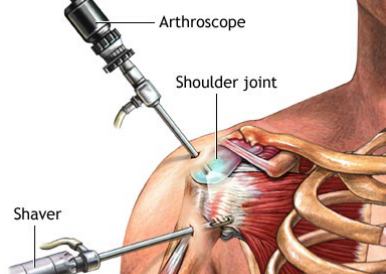Prologue: The First Knee I Ever Replaced
I still remember the day like it was yesterday. A quiet morning in my clinic. The door creaked open, and in walked Mrs. Fathima, a 68-year-old grandmother from a nearby village. She clutched her daughter’s arm for support, each step slow and painful. Her knees were bent and misshapen, worn down by decades of arthritis that she had bravely endured in silence.
She looked at me, eyes filled with hope and a touch of fear.
“Doctor, I just want to play with my grandchildren again,” she said, her voice trembling.
That was the first knee I ever replaced. That surgery not only changed her life — it changed mine. Every knee replacement I’ve done since then has taught me valuable lessons about precision, resilience, and the quiet miracles of modern orthopedics.
This is my story — and possibly yours, if you’re thinking about knee replacement surgery.
The Broken Hinges – Why Knees Fail
Our knees are one of the hardest-working joints in our body. They bear the weight of our entire body with every step we take. But like any machine, time and wear can take their toll.
The Silent Epidemic: Common Causes of Knee Damage
1. Osteoarthritis
This is by far the most common reason people need knee replacement. It’s often called the “wear-and-tear arthritis”, where the cartilage that cushions the knee gradually wears away. Without this cushioning, bones rub painfully against each other.
This condition is especially common in women over 60, and people who’ve spent years in physically demanding jobs or on their feet.
2. Rheumatoid Arthritis
Unlike osteoarthritis, rheumatoid arthritis is an autoimmune disease. The body’s own immune system mistakenly attacks the lining of the joints, causing swelling, pain, and eventual joint destruction.
3. Post-Traumatic Arthritis
This can occur after an old injury — maybe a fracture, ligament tear, or meniscus injury that didn’t heal well. Over the years, this damage leads to uneven pressure on the joint and, finally, arthritis.
The Telltale Signs That Your Knee Is in Trouble
Patients usually describe:
- Pain that wakes them at night
- Stiffness that makes every movement a struggle — like trying to move a rusted hinge
- Needing a stick, walker, or shopping cart for support
- Difficulty climbing stairs, sitting cross-legged, or getting up from a chair

The Decision – When to Say "Yes" to Surgery
Making the decision to have knee replacement surgery isn’t easy. Many patients try physiotherapy, medications, and injections first — and that’s perfectly fine. But at some point, you need to ask:
Is my knee pain controlling my life?
“Will Physiotherapy or Injections Help?”
These treatments are useful in early arthritis. They can help reduce pain, improve mobility, and delay surgery. But they can’t reverse severe damage.
You may need knee replacement if:
- Your X-ray shows bone-on-bone arthritis
- You’ve tried 3 to 6 months of conservative treatments without success
- Pain and stiffness are preventing you from living fully — whether that’s climbing stairs, going to temple or mosque, or playing with grandchildren
The Turning Point: Stories From My Patients
I remember Mr. Menon, a retired banker. He was once an avid traveler. But arthritis made every step painful.
“I stopped going to temple because I couldn’t sit cross-legged,” he told me.
That was the moment he decided to move forward with knee replacement.
Inside the OR – A Masterpiece in Metal & Polyethylene
Knee replacement surgery is often called one of the most successful procedures in all of medicine. But what actually happens during the operation?
The 90-Minute Miracle
The entire surgery takes about 90 minutes. It’s done under spinal anesthesia, so you’re awake but pain-free. Here’s what we do:
1. Precision Bone Cuts
I carefully remove the damaged bone and cartilage. This is like sculpting marble — every cut must be exact so that the new joint fits perfectly.
2. Implant Selection
We select the best implant for your knee based on your anatomy and needs. This ensures the new knee functions smoothly.
3. Balancing the Ligaments
A key part of the surgery is making sure the ligaments are balanced. This allows the knee to bend and straighten evenly, like a well-oiled hinge.
Types of Implants We Use
• Cruciate-Retaining (CR)
This type keeps the posterior cruciate ligament intact. It’s suitable if your ligament is healthy.
• Posterior-Stabilized (PS)
This is the most common implant. It replaces the damaged ligament with a special cam mechanism in the implant itself.
• Customized or Gender-Specific Implants
These are designed for smaller knees or specific anatomical needs — particularly useful for many of our Kerala patients.
Results You Can Expect
- Pain relief within days to weeks
- Better knee movement
- Implants that can last 20 to 25 years or more, especially with modern materials and techniques
The Hardest Part – Recovery
Here’s the truth: knee replacement recovery requires commitment. But with the right approach, you’ll get your life back — and more.
What to Expect After Surgery
• First 72 hours
The pain is manageable with modern pain control methods (multimodal analgesia). You’ll be encouraged to stand and walk with support within 24 hours.
• Week 1
Many patients feel frustrated or emotional during this time. The knee is still swollen, and exercises feel challenging. This is normal. The key is to keep moving.
• Week 2-3
This is when most patients have the “aha!” moment — when they can walk farther, with less pain, and begin to feel hopeful.
My Golden Recovery Rules
- Bend your knee every day — even a little progress each day adds up.
- Ice regularly — 20 minutes every 2 hours can help reduce swelling and pain.
- Move before pain sets in — don’t wait until the knee feels stiff to do your exercises.
The Kerala-Specific Recovery Challenges
Living in Kerala brings unique challenges after knee surgery:
• Floor Sitting
Many patients ask when they can sit cross-legged or on the floor again. The answer? Give it 6 to 8 weeks. And always practice first with supervision to avoid falls.
• Slippery Monsoon Floors
Wet floors are dangerous after knee surgery. Always wear non-slip footwear and be cautious during the rains.
Epilogue: Your Knee, Your Decision
A knee replacement isn’t about “giving in to age.” It’s about choosing to stay active and independent.
Imagine:
- Climbing stairs without pain
- Going on that long-postponed pilgrimage
- Dancing at your grandchild’s wedding
- Walking through your paddy field or garden without a stick
The decision to have surgery is a brave one. And when done at the right time, it can be truly life-changing.
Final Thought
Many people think knee replacement means the end of independence. The reality is the opposite. Knee replacement surgery helps you regain your independence, your confidence, and your joy in daily activities.
So whether your goal is to play with your grandchildren, take that dream houseboat trip in Alleppey, or simply walk without pain — remember, your second act begins with one brave decision.
Need Guidance?
If you’re in Kerala — whether in Malappuram, Palakkad, Thrissur, Ernakulam, or Kozhikode — and want an honest, no-pressure conversation about knee replacement:
Are always open. Let’s talk about your options, your goals, and how we can help you walk pain-free again.


